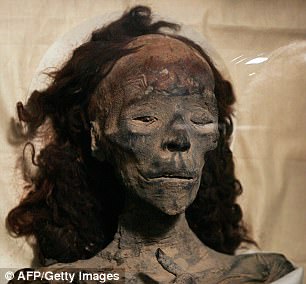Meet the ‘richest man who ever lived’: Scientists recreate the face of Tutankhamun’s grandfather Amenhotep III for the first time in 3,400 years
He ruled ancient Egypt at the height of his power, was worshiped as a living god and was the grandfather of Tutankhamun.
And now the true face of Amenhotep III has been revealed.
The pharaoh, described by one archaeologist as ‘one of the richest men who ever lived’, led Egypt through a period of unprecedented prosperity and international power.
He is considered one of the greatest pharaohs and has more surviving statues than any other, but no scientific reconstruction of his face has ever been made.
Now, using data from his mummy’s skull, a multinational team has revealed his true likeness for the first time in almost 3,400 years.
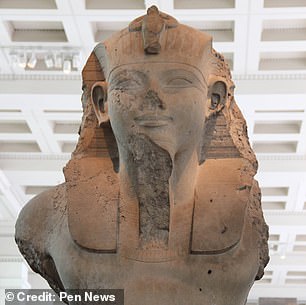
He ruled ancient Egypt at the height of his power, was worshiped as a living god and was the grandfather of Tutankhamun. And now the true face of Amenhotep III has been revealed
Michael Habicht, an archaeologist at Flinders University in Australia, said he looked very different from the pharaoh seen in images.
He said: ‘It is a calm sight for a man who promoted peace and lived in a time of greatest economic prosperity.
“He may be one of the richest men who ever lived, at least in his time.”
He continued: ‘It is difficult to determine the cause of death by analyzing the available remains.
‘Research from the 1970s described Amenhotep III as an obese, ill and sedentary man, who was nearly bald and suffered from dental problems in the last years of his life.
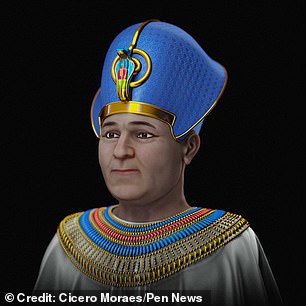
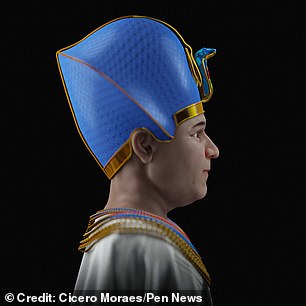
Brazilian graphics expert Cicero Moraes, who brought the face back to life, said the reconstruction began by digitally recreating the pharaoh’s skull, using images and data from his mummy.
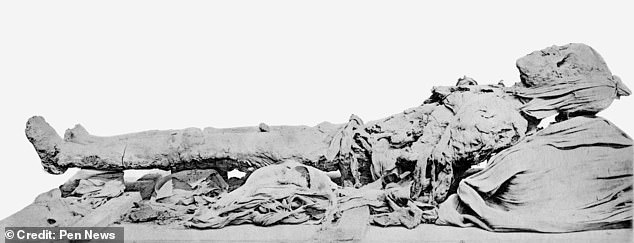
The mummy of Amenhotep III is now kept in the National Museum of Egyptian Civilization in Cairo
‘Although he was one of the truly great kings of Egypt, his height is approximately 156 cm, making him one of the smallest kings known from their preserved mummies.
‘This rather small body size is not reflected in art; in works of art he is known for his gigantic statues.’
Brazilian graphics expert Cicero Moraes, who brought the face back to life, said the reconstruction began by digitally recreating the pharaoh’s skull, using images and data from his mummy.
Additional data from living donors was then used to determine the likely dimensions and position of the king’s nose, ears, eyes and lips.
Mr Moraes said: ‘Based on historical knowledge, Amenhotep III looked robust, which is why we used data from individuals with a high body mass index.’
He added, “If we are not mistaken, this is the first facial approach of Amenhotep III.
‘Compared to other approaches to pharaohs that I have participated in, this was also the most complete, because we modeled the clothing and accessories.
‘We were amazed at the end result; seeing a complete bust with these colors and the serenity of the face is quite satisfying.
“It’s our gift to everyone who appreciates history.”
The pharaoh was worshiped as divine during his lifetime and he claimed that the god Amon was his real father – with the name Amenhotep meaning ‘Amon is pleased’.
It is believed that he died between the ages of 40 and 50, leaving his successor a kingdom at the height of its power and wealth.
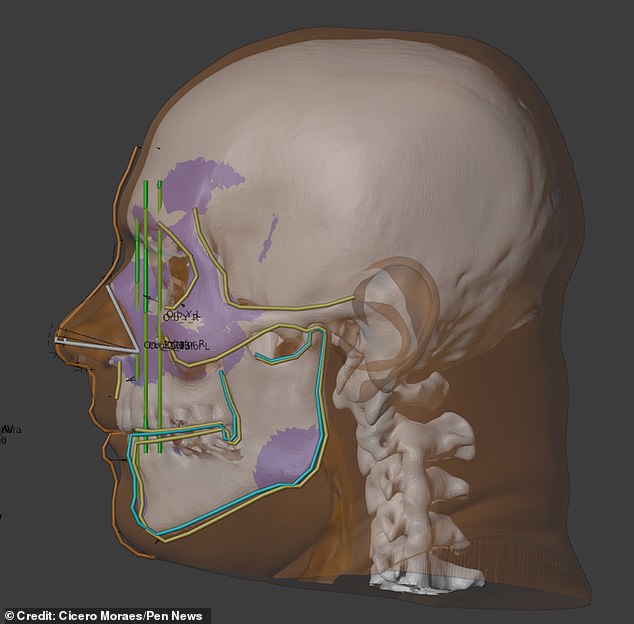
Data from living donors was used to determine the likely dimensions and position of the king’s nose, ears, eyes and lips
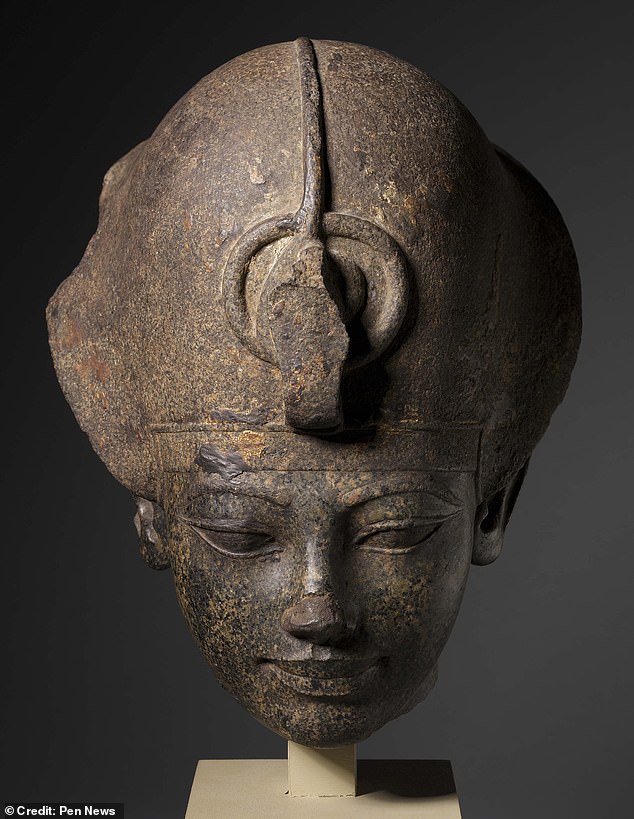
The pharaoh was worshiped as divine during his lifetime and he claimed that the god Amun was his real father – with the name Amenhotep meaning ‘Amon is pleased’. Pictured: A bust of Amenhotep III at the Cleveland Museum of Art
Dr. Habicht said: ‘Diplomatic letters from foreign potentates begged him to send them some gold as a gift, ‘since gold in Egypt will be as plentiful as sand.’
“It is the usual over-exaggeration for such a letter, but nevertheless indicates extreme wealth.”
He added: ‘There are speculations that the mummy of Amenhotep III may have been completely covered in gold leaf, so that it must have looked like a statue of a god.’
The archaeologist said the pharaoh may also have been something of a womanizer.
‘He was apparently very interested in women; he imported hundreds of foreign harem ladies and collected them like other people collect stamps,” he said.
At his death, Amenhotep III was succeeded by his son, Amenhotep IV.
The new pharaoh would rebel against the powerful Amon priesthood and install the sun god Aten as the main Egyptian deity.
He changed his name to Akhenaten – meaning ‘favorable to Aten’ – and even moved his capital away from Thebes – the ‘city of Amun’ – to a new city in honor of the sun god Akhetaten.
But his son, Tutankhaten, would bring the cult of Amun back to prominence and change his name to Tutankhamun – meaning ‘the living image of Amun’.
Tutankhamun would become one of history’s most famous pharaohs thanks to the discovery of his tomb in 1922, which was largely intact and contained many of his original artifacts.
Dr. Habicht, Mr Moraes and their colleagues Elena Varotto of Flinders University, and Francesco Galassi of the University of Lodz in Poland, plan to publish their findings in a scientific journal.

